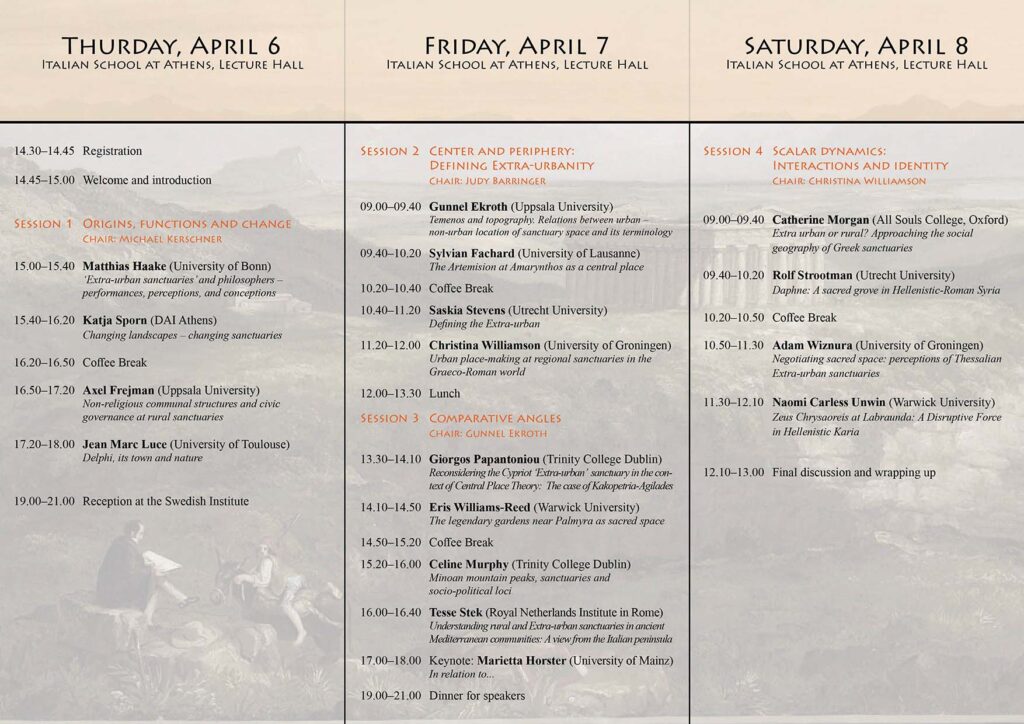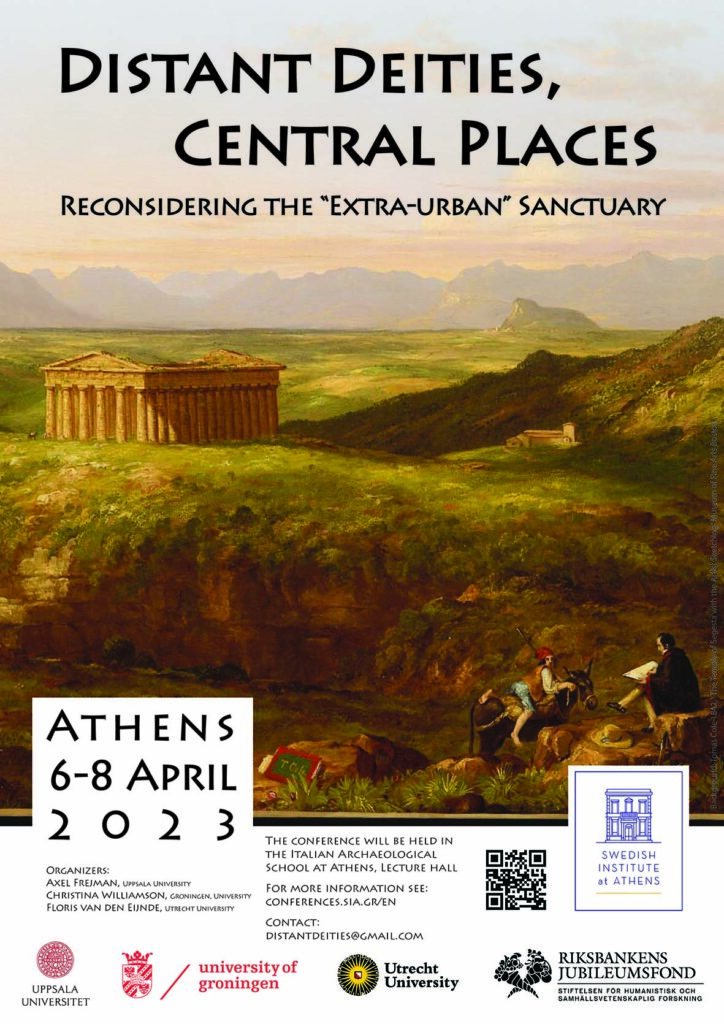Sanctuaries located at a distance from major centres of population in the ancient world are conveniently labelled by scholars as ‘extra-urban’. Most scholars have an idea as to what kind of sanctuary this indicates. But how accurate is this image? How has the designation of ‘extra-urban’ steered our thinking about these special places of cult? What implications does the term bring with it, and what other dynamics might be left out of the picture?

These are questions that a couple of colleagues and myself have wrestled with for some time in our research. Axel Frejman, who has studied Labraunda, among other sanctuaries, and I have especially been discussing this for some years, and this led to the Complexity at Sacred Sites workshop in Uppsala in November 2022. This was intended as a step towards an international conference in 2023. Floris van den Eijnde joined our team, he investigates among others the sacred landscape of Attica.
Together, and with substantial support from the Riksbankens Jubileumsfonds, we organized a conference last April via the Swedish Institute at Athens under the title Distant Deities, Central Places – Reconsidering the ‘Extra-urban’ Sanctuary. The central aim was to address the questions above by reconsidering the terminology that we use to describe and discuss sanctuaries with our colleagues, but also by realigning our thinking about places of cults, and our positioning of them in the divine and human landscape.
We were able to attract an international group scholars, at different career stages, who addressed topics ranging from the Bronze Age to the imperial period, and from Italy in the West to Syria in the East, with approaches that questioned terminologies and theories while being substantiated with case studies and a spectrum of empirical evidence – as the programme flyer indicates.

We were very pleased at the richness of the papers, which no doubt raised some eyebrows – Delphi as a very urban sanctuary, the Artemision at Amarynthos, or Kakopetria-Agilades on Cyprus as vitally central places of connections, the networks of Minoan peak sanctuaries, and cave shrines connecting maritime sites along the coast of the Ionian islands, to name just a few. The broad range of topics and approaches allowed us all to draw some comparisons between cultures, places, and over time. In short, the different papers showed us how truly complex sanctuaries beyond the boundaries of the urban nucleus can be, and the many functions that they can fulfil simultaneously, spilling well outside the confines that our scholarly frameworks often squeeze them into.
We were very fortunate to have Jenny Wallensten, the director of the Swedish Institute at Athens, make arrangements for the conference to be held in the lecture hall of the Italian Archaeological School at Athens, the same venue as the workshops organized by Robin Hägg on Greek religion several years before. The conference proceedings will be published in the same series, on Greek religion, Acta Instituti Atheniensis Regni Sueciae 4˚ series.

